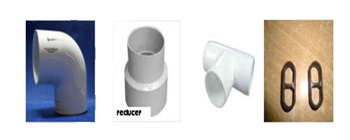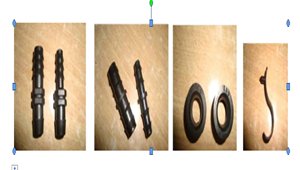COMPONENTS OF DRIP IRRIGATION SYSTEM:
 1. Water Source:
1. Water Source:
The source of water should be open wells, bore wells, canals, rivers, reservoirs etc.
 2. Pump:
2. Pump:
The water from the source has to be supplied under appropriate pressure and discharge.
 3. Filters:
3. Filters:
In this drip irrigation system, drippers, laterals consisting of small holes are being used. If foreign particles, leaves, algae, etc. coming with water are not filtered. They will clog the drippers and drip tape holes resulting in obstructing the water to the plants. To prevent this problem, a filter is connected with the main line.
Following points should be considered while choosing the type of filter.
- Efficiency in separating particles larger than the required filtration level.
- Efficiency, convenience, and simplicity of washing and cleaning process
- Filter body: Metal, plastic, fiber glass, or stainless steel.
- Filtration elements: Disc or Screen.
- Availability of service and replacement parts.
- Manual or automatic washing.
 3.1. Sand filter:
3.1. Sand filter:

It stops the impurities and allows only clean water to go ahead, thus preventing clogging of the system. Available in 30, 60, 90 lts.
 3.2. Screen filter:
3.2. Screen filter:

A screen filter is a type of filter using a rigid or flexible screen to separate sand and other fine particles out of water for irrigate.
 Hydro cyclone filter:
Hydro cyclone filter:
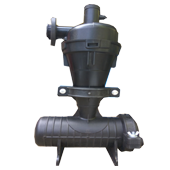
The principle of hydro cyclone filter is Centrifuga separation of solids from the Water.
 Disc filter:
Disc filter:
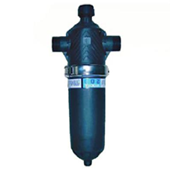
Primary filter for Bore wells & secondary filter for Open water sources.The of water source, water quality, and required flow rate of the system.
 4. Pressure gauge:
4. Pressure gauge:
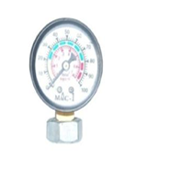
A device indicating pressure in a filter system. Provides a determination of how the system is operating, and informs us when service is required.
 5. Fertigation equipments:
5. Fertigation equipments:
Venturi, Injector, Fertilizer tank are used for the fertigation.
 5.1. Venturi Injector:
5.1. Venturi Injector:
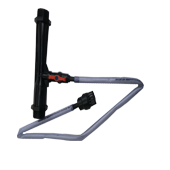
This system of injection is very low cost and works by creation of partial vacuum in the system and suction of the fertilizers in to the irrigation system through Venturi action.
The vacuum is created is created by diverting a percentage of water flow from the main and pass it through a constriction which increases the velocity of flow thus creating a drop in pressure.
When pressure drops the fertilizer solution is sucked into the Venturi through a suction pipe from the tank and from there enters into irrigation stream. The suction rate of Venturi is 30 to 12 lit. per hour.
 5.2. Fertilizer tank:
5.2. Fertilizer tank:
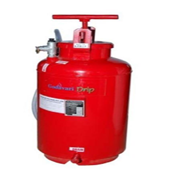
In this system part of irrigation water is diverted from the mainline is flow through a tank containing the fertilizer in a fluid or soluble solid form, before returning to the main line the pressure in the tank and the mainline is same but slight difference in pressure is created between the off take and return pipes for the tank by means of a pressure reducing valve.
This causes water from main line to flow through the tank causing dilution and flow of the diluted fertilizer into the irrigation system. With this system the concentration of fertilizer entering the irrigation
 6. Non return valve:
6. Non return valve:
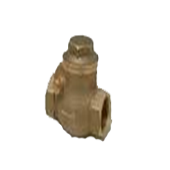
These valves are used to prevent unwanted flow reversal. They are used to water charges continuously with time.
prevent damaging back flow from the system to avoid return flow of chemicals and fertilizers in to the water source itself in order to avoid contamination of water source. Available in 2", 3" sizes.
 7. Throttle valve:
7. Throttle valve:
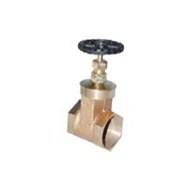
Throttle valve having gun metal body. It regulates the flow of liquid. Available in 2" and 3" sizes.
 8. Main line:
8. Main line:
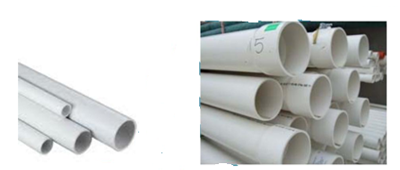
This is PVC pipe line used to carry water from water source to sub-main.
 9. Sub-main line:
9. Sub-main line:
Sub-main line is also a PVC pipe line that takes water from main line and supply water to the laterals.
 10. Laterals:
10. Laterals:
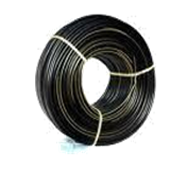
These are source of tubing or drip laterals and are made of LLDPE which quite flexible and strong. These convey water from sub main lines to root zone via drippers.
 11. Drippers:
11. Drippers:
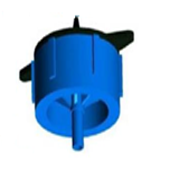
Water coming from the laterals reaches the plant root zone through drippers. Types of crop, soil and water requirements ar deciding the factors for drippers spacing on the lateral. Drippers may be pressure compensating depending upon field.
 12. Emitting pipe:
12. Emitting pipe:
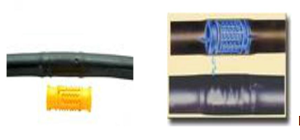
Inline drip tubing is an emitting pipe with drippers integrated in the lateral itself. The drippers are integrated inside the lateral at desired spacing. This system can be efficiently used in row crops including vegetable, melons, sugarcane.
3/4 Special Features of inline drip tube:
Made from the high quality linear low density polyethylene material.
Maximum resistance to blockage.
Easy to reel out during non-application days.
 13. Valves:
13. Valves:
Drip system is provided with different types of valves. To control the water pressure,
Bypass valve is provided before filter.
Gate valve is provided to prevent the pressure difference for the chemigation and fertigation.
Control valve Is provided at the inlet of the sub main
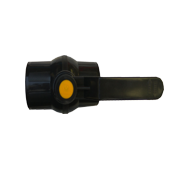
Flush valve is provided at the end of the sub-main, fitted to facilitate regular Cleaning of main and sub-main.
Air release valve Is installed at the highest point of the main line to release the entrapped air during start of the system and to break the vacuum during shut off
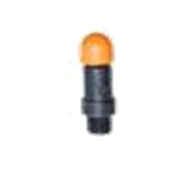
 14. PVC fittings & Accessories:
14. PVC fittings & Accessories:
